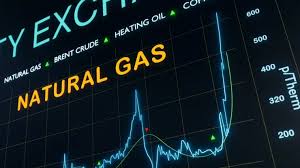
U.S. Utilities Face Sharp Increase in Natural Gas Costs
A new report from the U.S. Energy Information Administration (EIA) projects that natural gas prices for utilities will rise by 37% by the end of 2025, driven by surging wholesale market costs.
While consumers are expected to feel the impact, the cost increase for end users will be significantly lower than what utilities themselves will pay.
Wholesale Prices Driving Broad Sector Increases
Electric and Industrial Sectors See Largest Jumps
The EIA’s latest Short-Term Energy Outlook forecasts that the average price of natural gas paid by electric power plants will climb 37%, while prices paid by industrial customers will rise 21% compared with 2024 levels.
Smaller increases are expected for commercial and residential customers, both projected at 4% year-over-year.
Each sector’s price is partially influenced by the Henry Hub benchmark, the industry’s key indicator of natural gas spot prices. The report noted that Henry Hub prices have been higher each month compared with the same months in 2024. On an annual basis, the EIA expects the 2025 Henry Hub price to be 58% higher than in 2024.
Industrial and Power Producers Feel the Impact First
Wholesale Price Volatility Hits Major Buyers
The wholesale price of natural gas most directly affects industrial users and power generators, whose retail prices closely mirror shifts in the Henry Hub spot price.
These large-scale consumers often buy gas on a wholesale basis, covering both commodity and transmission costs. As a result, the rise in wholesale market prices will quickly translate into higher costs for utilities and industrial plants.
Retail Prices for Smaller Consumers Rise More Slowly
Regulation and Billing Cycles Moderate Increases
For residential, commercial, and small industrial customers, natural gas prices do not track wholesale spikes as closely, because utilities typically adjust rates gradually through billing cycles.
These adjustments often occur under state regulatory oversight, which can limit rapid price increases and smooth out volatility.
EIA noted that customer charges and fixed distribution fees also dilute the direct impact of wholesale fluctuations on household and small-business bills.
Data values: Natural Gas Prices
EIA Emphasizes Data-Based Forecasting Approach
Sector Prices Derived from Utility Revenue and Sales
The EIA’s natural gas industry surveys derive sector-level prices from utility revenues and sales volumes, reflecting what end-use consumers actually pay.
According to EIA analysts, the combination of strong power-sector demand, higher storage injections, and global LNG competition continues to pressure domestic natural gas markets heading into 2025.
Source: EIA




